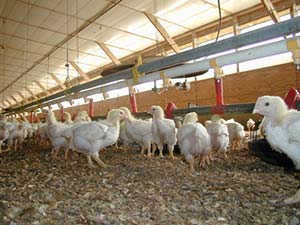The Washington, DC-based National Chicken Council (NCC) on December 1 released new national survey findings on consumers’ perceptions about chicken production, revealing that nearly 80 percent of Americans mistakenly believe that chicken contains added hormones or steroids, when in fact no chicken commercially raised or distributed in the USA is given hormones or steroids.
In some cases, consumers aren’t able to easily access facts on chicken production. According to the survey, 68 percent of Americans believe that the media portrays the care of chicken negatively, highlighting the need for chicken producers to engage in more conversations with consumers about where their chicken comes from. The survey uncovered many concerning assumptions about the care and safety of chicken, including:
- While a majority (78 percent) believes chickens are genetically modified, the reality is that there are no genetically modified chickens in the food chain. Over the years, chickens with the healthiest growth and size have been selected for breeding – and are fed, housed and raised well. The result is a larger, healthier bird.
- A majority (77 percent) erringly believes chicken contains added hormones or steroids. However, no chicken sold or raised in the United States is given hormones or steroids. In fact, the USDA has banned all hormones and steroids in poultry since the 1950s. Good breeding, proper nutrition, care by a veterinarian and better living conditions all contribute to the healthier growth of birds.
- Nearly three-quarters (73 percent) of those surveyed believe antibiotics are present in most chicken meat. The fact is, however, that meat from chickens sold in the United States is free of antibiotics. The USDA regulates withdrawal periods to ensure no meat bought in stores contains antibiotics or antibiotic residue from animals that may need medicine.
- More than two-thirds (68 percent) of those polled believe most chickens raised for meat are raised in cages. The reality is that no chicken meat bought in the USA comes from birds raised in a cage. The majority of chickens raised for meat live in large, open structures called houses where they are free to walk around.
 Chickens in the USA are raised in protected facilities to help keep them healthy, says the National Chicken Council.In an effort to recognize and respond to these misperceptions, NCC announced the launch of Chicken Check In, which provides answers to questions about chicken production in the USA and gives consumers a close look at the lives of the birds and how they get to their tables every day.
Chickens in the USA are raised in protected facilities to help keep them healthy, says the National Chicken Council.In an effort to recognize and respond to these misperceptions, NCC announced the launch of Chicken Check In, which provides answers to questions about chicken production in the USA and gives consumers a close look at the lives of the birds and how they get to their tables every day.
“We take pride in the care of our chickens, but we know it’s on us as an industry to do a better job of providing more information on how our food gets from farm to table,” said Tom Super, a spokesperson for the National Chicken Council. “Food is an emotionally-charged topic, and with conflicting information readily available online and on social media, it’s understandable people are concerned. We invite consumers with open arms to come and take a look at the work we’re doing to progress as an industry in providing safe, healthy and sustainable food.”
Survey Methodology
The survey was conducted by ORC International among 1,011 adults aged 18 years or older. It took place from September 17-20, 2015, and has a margin of error of +/- 3.1 percent at the 95 percent confidence level.





